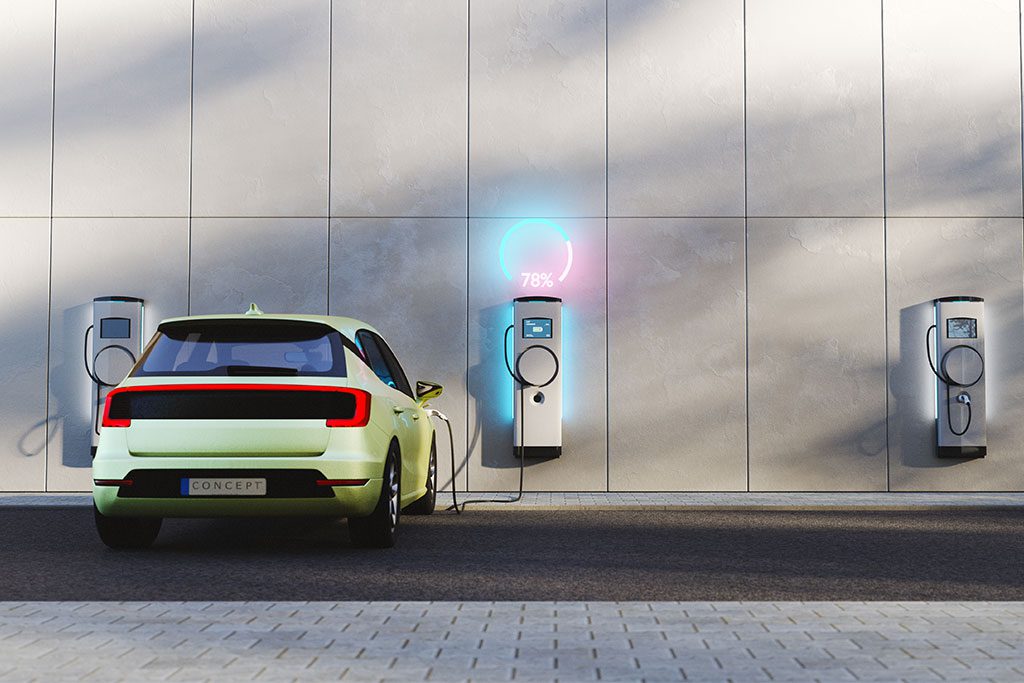
IESE Insight
Electric cars, now and in the future
The all-electric future seems to have hit a speedbump — or maybe just a detour.
By Marc Sachon
In June 2022, after intense negotiations, the 27 EU member states agreed to the European Commission’s proposal to effectively ban the sale of new internal combustion vehicles by 2035, forcing the adoption of pure battery electric vehicles (BEVs). China, Japan and the United States are on a similar path.
Almost two years later, in May 2024, this planned transition has hit a rough patch: Sales of BEVs are stagnating or falling, iconic BEV companies are facing falling quarterly sales, and some decision-makers are openly questioning the 2035 deadline. In addition, the United States has just announced that it will tax electric vehicles from China 100%, and Europe will similarly levy tariffs of up to 25%, which will reduce their competitiveness. Is all this a serious stall or just a temporary setback to the wider deployment of electric cars? Where to from here?
The strengths of the battery electric vehicle
The electric car is superior to a traditional car in turning stored (electric) energy into kinetic energy of movement. It has no local emissions, it is easier to manufacture and it makes more space available to passengers, as the motor and powertrain are smaller. Moreover, it is better adapted to the increasing importance of electronics and software and their seamless integration with mobile phones. It is one step closer to becoming a mobile device itself, as visionaries postulated years ago. It is also less noisy. Most people who have driven an electric vehicle are not too keen on returning to a traditional car.
The current challenges of the electric vehicle
Some challenges, however, remain. One is the high cost of batteries. Predictions by leading OEMs that by 2020 battery packs would reach the crucial threshold of $100/kWh, putting them at cost parity with traditional cars, have not materialized. Worse, the remarkable drop in cost that we saw from 2010 (when it was approximately $1,000/kWh) to today cannot continue; that cost curve is flattening out.
A related problem is the residual value of electric vehicles: While for traditional cars there is a liquid secondary market, the secondary market for BEVs is still in its early stages. One reason, again, is the high cost of batteries if they need to be replaced. This problem has led leading car rental companies such as Hertz and Sixt to rethink their BEV strategies.
Another problem is charging the batteries: Clients renting cars will not respond positively if required to return a fully charged BEV to the airport. At the same time, many airports do not have the necessary fast-charging infrastructure, and even if they did, it would make the process of “flipping” the cars more complicated and time-consuming, with a big inventory of cars needing to be charged.
As such, the sale of electric vehicles must be seen in the context of the necessary charging infrastructure. Research from Norway, one of the countries leading the adoption of electric vehicles, has shown that subsidies spent on accelerating the charging infrastructure had a bigger effect than price subsidies for electric cars. Some countries in Europe, such as France, have accelerated the installation of fast chargers along their main highways — but much more still needs to be done, also in terms of price transparency. The EU has put plans in motion to address this.
Closing the recycling loop remains the biggest challenge for electric vehicles. Predictions regarding future demand for key minerals, such as lithium, cobalt and nickel, indicate that, even with recycling, current mining capacities will not be enough to cover demand.
To be effective, recycling needs to happen at an industrial scale and be highly automated. Currently, however, this is impossible — different geometries at the pack, module and cell levels are made even worse by different cathode chemistries. This does not lend itself to the industrial processes needed to achieve significantly higher recycling and reuse of lithium and other minerals in new batteries than is currently happening.
Even if the industry is able to solve this problem and meet EU recycling goals for 2037 — reusing 26% of cobalt, 85% lead, 12% lithium and 15% nickel — and benefit from emission-free BEVs, in all likelihood nations outside of Europe will see more mining activities along with consequent negative externalities.
Reflections on the role of BEVs in urban and rural spaces
Looking at cities and large metropolitan areas, small-size BEVs could provide a solution to road congestion. They also require far smaller batteries than large SUVs or pickups. Reduced speeds in cities allow for adapted safety measures, further lowering the vehicle mass, allowing for even smaller batteries.
It is here where electric cars may soon dominate the landscape. European OEMs would be well advised to ensure that they offer cars in this segment and which are competitively priced with foreign imports.
Outside of urban areas, traditional cars meeting the current Euro 6 and future Euro 7 regulations may provide an alternative, as their emissions are very low — and could be made net-zero by using e-fuels.
Recent statements by some leading politicians and industry captains indicate that the 2035 target is being reconsidered, at least in part. The adoption of BEVs continues to be an interesting transition to watch.
MORE INFO:
From mining to charging: electric cars in numbers
